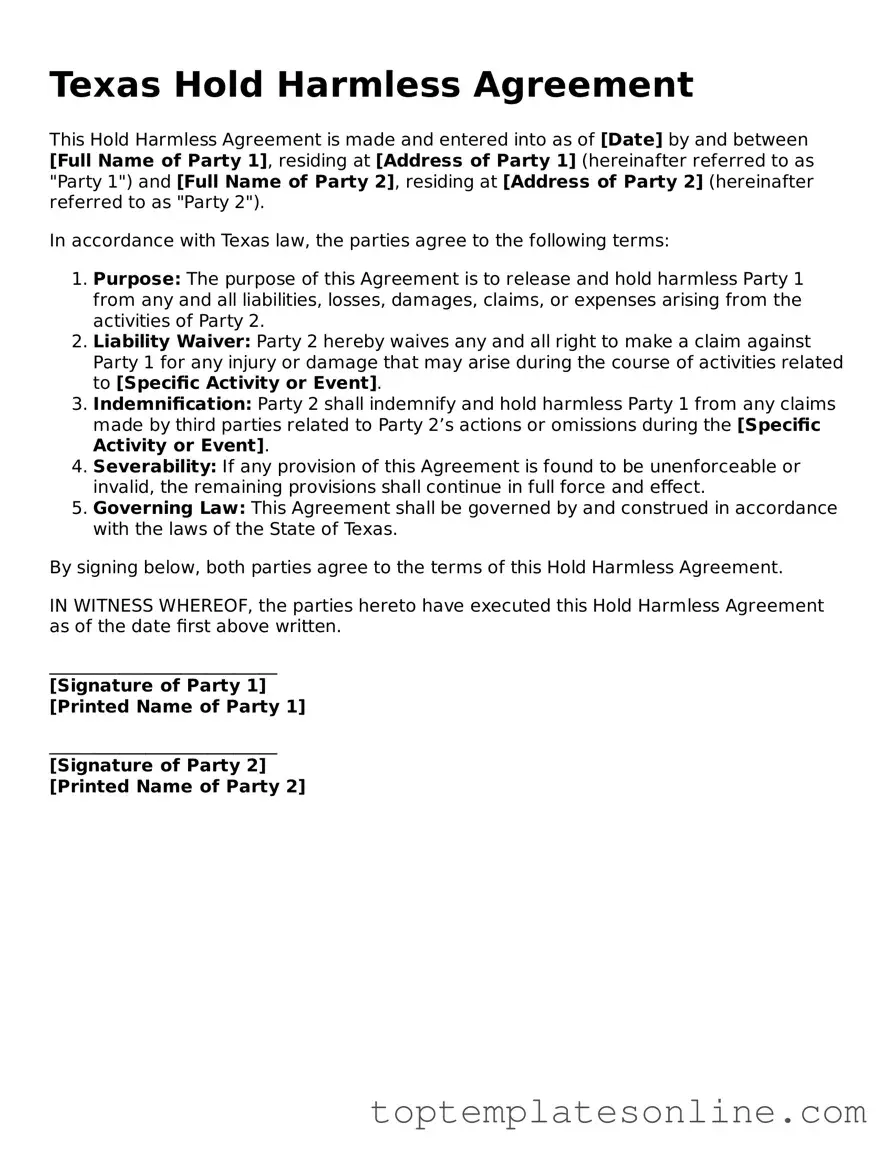Blank Hold Harmless Agreement Template for Texas State
A Texas Hold Harmless Agreement is a legal document that protects one party from liability for any injuries or damages that may occur during a specific activity or event. This form is commonly used in various contexts, such as real estate transactions, construction projects, and events. By signing this agreement, individuals or organizations agree to assume the risks involved, thereby shielding the other party from potential claims.
Customize Hold Harmless Agreement Here
